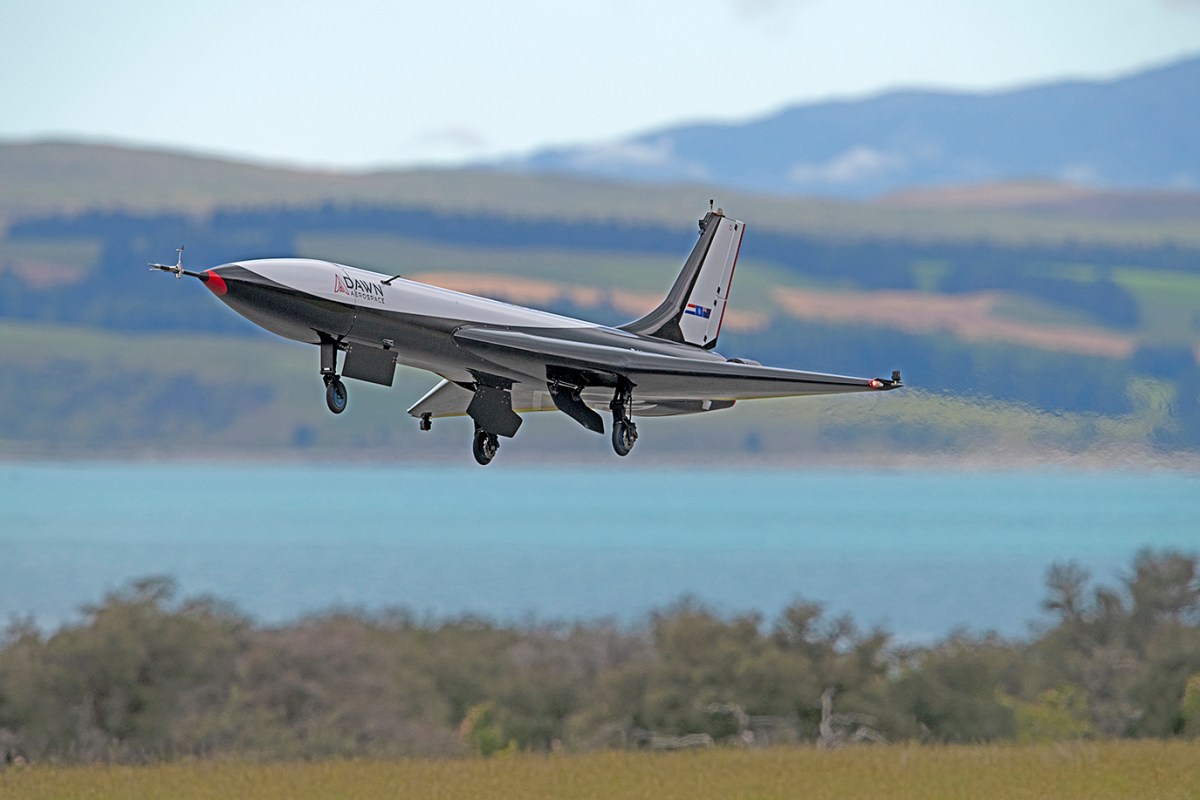
Dawn Aerospace’s rocket-powered aircraft soared to new heights in its latest test campaign, as the company looks to build what could be the highest-performance aircraft to take off from a runway.
The series of three flights, which were completed in late July, saw the Mk-II Aurora vehicle achieve a maximum speed of Mach 0.92 and an altitude of 50,000 feet. That is a 3x and 5x improvement, respectively, over the previous campaign. The next flight campaign, scheduled for mid-September, will attempt supersonic flight.
Mk-II is acknowledged as a development vehicle, paving the way for a two-stage-to-orbit aircraft called Mk-III. But it’s easy to imagine the demand for a vehicle with the kind of capabilities Dawn aims to bring to Mk-IIB, as it calls the next supersonic iteration.
The company outlined some of those goals in a blog post published Tuesday: “By the end of 2025, we’re looking to climb faster than an F-15, fly higher than a MiG-25, faster than an SR-71, and, ultimately, be the first vehicle to fly above the Kármán line; 100km altitude (the generally accepted definition of ‘space’), twice in a single day. Some of these records have stood for over 50 years.”
The company sees two main development streams, or revenue opportunities. One, using a vehicle optimized for payload capacity, caters to remote sensing, Earth observation, and atmospheric research. The second, a vehicle optimized for high-speed atmospheric flight, would be for hypersonic testing, point-to-point transportation and microgravity research.
“We’re looking at still relatively small vehicle designs that would be optimized for each of those applications,” Dawn co-founder and CEO Stefan Powell said in a recent interview. “We’re not talking publicly about exactly which ones we’re going after, when or how or whatnot, but the Mk-IIB can do a little bit of both, and so it’s allowing us to dip our toes into the commercial side of both aspects. So we’re pretty active in market now, talking to lots of customers who would be wanting to do one or these other things.”
Dawn has raised at least $15 million in funding and has spent relatively little on the flight program so far, as such things go: just $10 million, with the overall aim of completing it for under $20 million total. The company generates some revenue from its other business line, small satellite propulsion systems, but it’s still a relatively small amount of outside capital, especially for an aerospace company at this stage of development.
It’s a far cry from the development costs of comparable spaceplanes, hypersonic aircraft, or vertical rockets. Powell credits the company’s achievement on the fact that it decided to pursue, as it puts in the blog post, “an aircraft with the performance of a rocket, not a rocket with wings.”
Rockets have high stakes: Each flight must be performed flawlessly. Even in development stages, when anomalies occur that can lead to a rocket’s destruction, it can be hard to survive — and actually iterate — without lots of cash to fall back on. Instead, the company looked to aviation. The company’s co-founder and CFO, James Powell, had worked on aircraft, and the company looked to that industry, with its low marginal operating costs, rapid reuse and high reliability to inform its plans.
“All of our development to date has really been about just developing this muscle of being able to learn quickly and apply this ‘it’s an aircraft with the performance of a rocket, not a rocket with wings’ mentality, because that allows just such a fundamentally better way to operate,” he said.
“I think common knowledge is that spaceplanes have been tried with the Shuttle, and that didn’t work, and it’s a dumb idea. And if not that then, things with wings are stupid because, look at Virgin Orbit, that didn’t work. Air launch is dumb. You have to get to quite a nuanced conversation before you actually understand the difference between what we’re trying to do and the rockets with wings that have flown before us, and how the path we’re on is very much an aircraft path, but there is still a path to making it have the performance of a rocket.”




